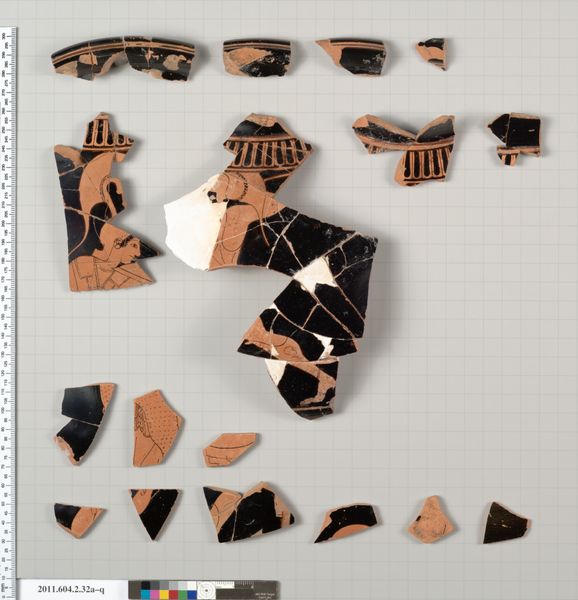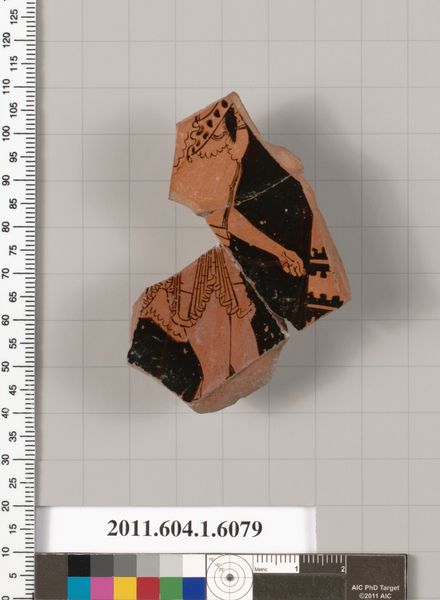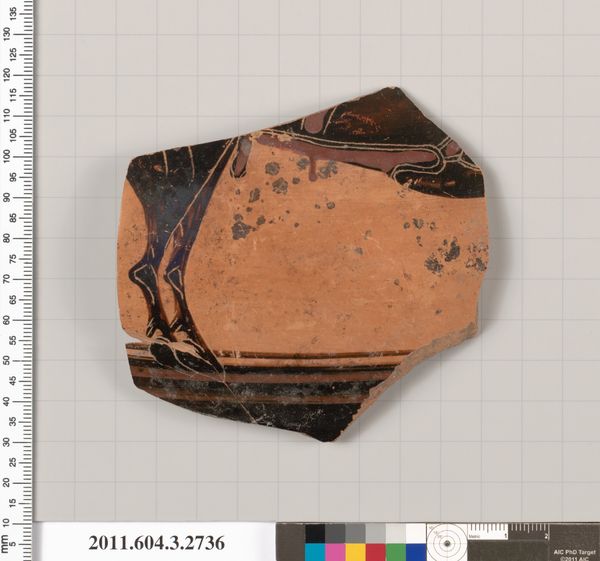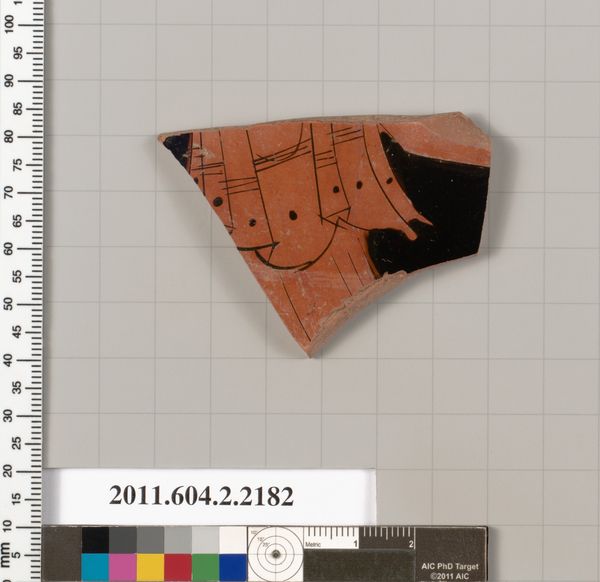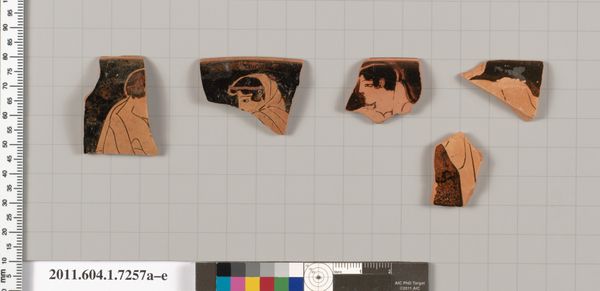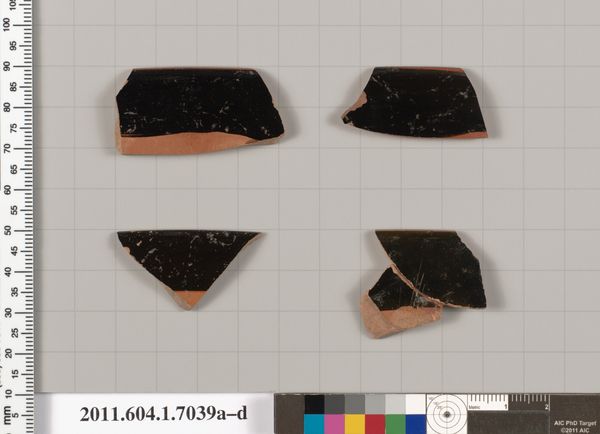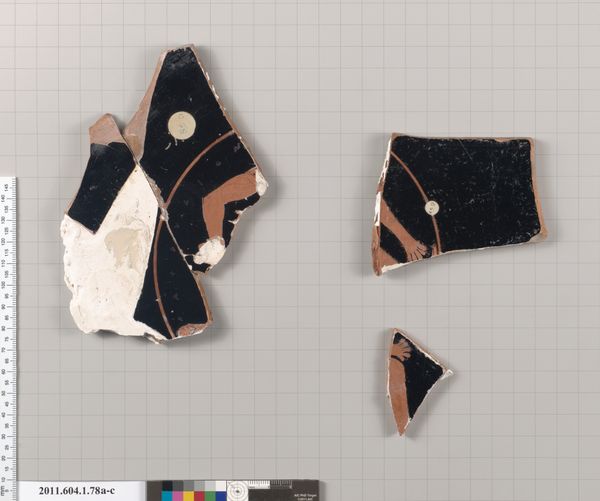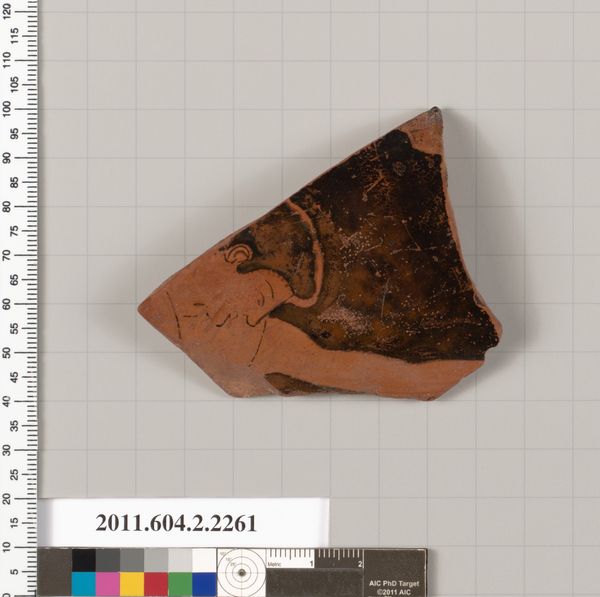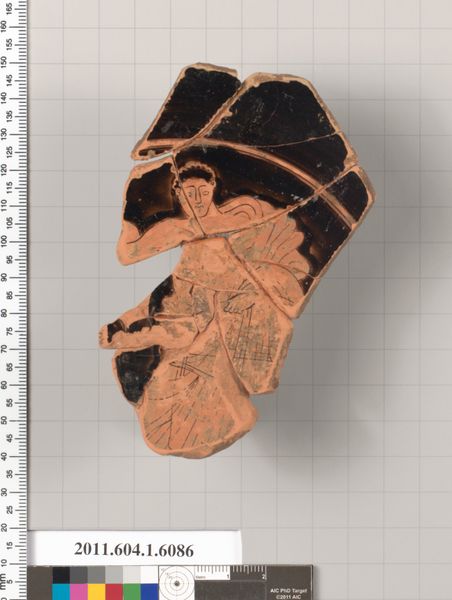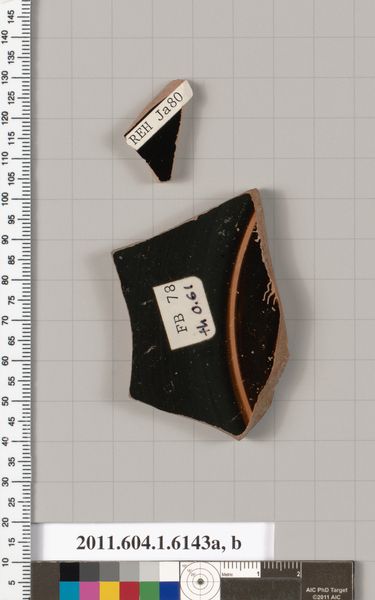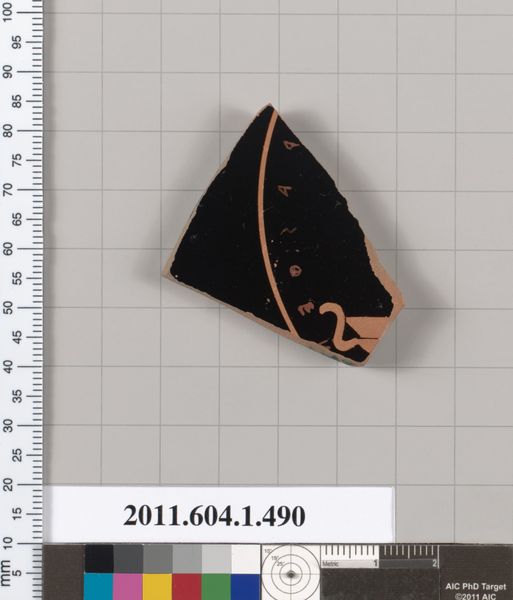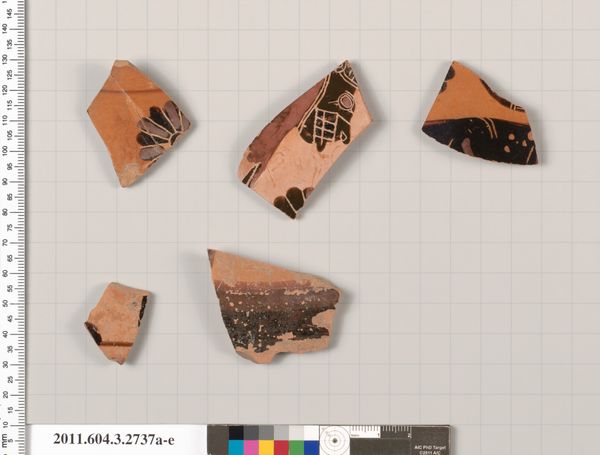
drawing, ceramic, earthenware
#
drawing
#
greek-and-roman-art
#
ceramic
#
earthenware
#
geometric
#
ancient-mediterranean
Copyright: Public Domain
These terracotta fragments of a kylix, or drinking cup, were made by Makron, a master potter active in Athens during the first half of the 5th century BC. These shards were once part of a vessel fired to a rich, warm red. The black glaze we see was achieved through a sophisticated firing process, controlling the kiln’s oxygen levels to transform the clay’s surface. The fragments, now divorced from their original form, invite us to imagine the cup from which they came, and the skilled labor required to produce it. The artistry of potters like Makron speaks to the central role of ceramics in ancient Greek culture. Beyond their functional purpose, these vessels were canvases for artistic expression, showcasing scenes of daily life, mythology, and ritual. This elevates the status of this object beyond mere utility, blurring the lines between craft and fine art.
Comments
No comments
Be the first to comment and join the conversation on the ultimate creative platform.
